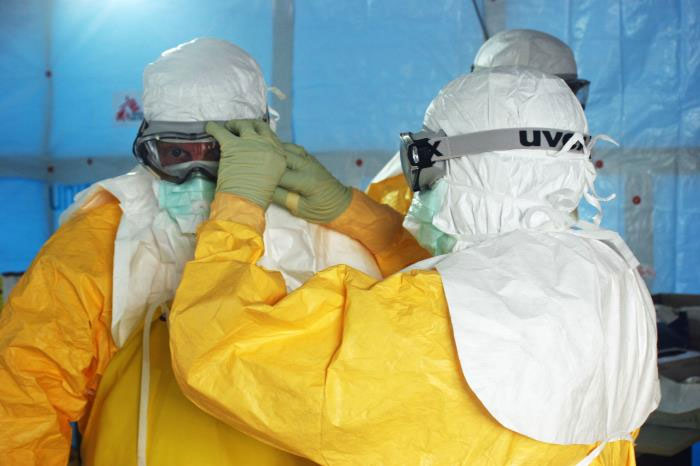Ebola Returns to Liberia: Where Did It Come From, and Could It Spread?

The return of Ebola in Liberia — with three new cases reported this week in the previously Ebola-free country — is worrisome, and raises questions about whether Liberia was really free of the disease to begin with, experts say.
Liberian health officials reported the death of a 17-year-old boy from Ebola on Sunday, and two other cases of Ebola in people who were with the boy when he died, according to ABC News. The country is now monitoring more than 100 people who had contact with the boy who died, and this number is expected to increase, according to the World Health Organization.
The new cases are the first in Liberia since the country was declared free of the disease on May 9. Health officials typically wait 42 days after the last case of infection has resolved to declare a country Ebola-free, because this is twice as long as the 21-day incubation period (the time it takes for a person infected with the virus to show symptoms) of the virus.
Even after this declaration, Liberia remained at risk for Ebola because two bordering countries — Guinea and Sierra Leone — were still reporting new cases. But Liberian health officials are not sure where these new cases came from. The teenage boy reportedly did not travel out of the country before he got sick, and he had not come into contact with people from Guinea or Sierra Leone, according to WHO.
"While I think everyone emphasized all along that there was the possibility [Ebola] could return, this is very concerning," said Dr. Jesse Goodman, an infectious-disease expert and a professor of medicine at Georgetown University Medical Center in Washington, D.C.
The new cases raise questions about whether Liberia was actually Ebola free during May and June, or if there was a "shadow epidemic" of cases that went undetected by officials, said Dr. Amesh Adalja, an infectious-disease specialist and a senior associate at the University of Pittsburgh Medical Center's Center for Health Security. "Maybe Liberia was really never free of Ebola," Adalja told Live Science. [Where Did Ebola Come From?]
Goodman agreed that previously undetected cases could be one source of the re-emergence of Ebola in Liberia. But exactly how the teenage boy became infected remains "a big mystery," Goodman said. "We need to understand where this young man acquired Ebola virus," he added.
Sign up for the Live Science daily newsletter now
Get the world’s most fascinating discoveries delivered straight to your inbox.
It's possible that the boy had contact with an infected animal, such as a nonhuman primate or a bat, Goodman said. Another source could be sexual transmission — the virus has been shown to remain in the semen of survivors for months.
There are also reports that some of the new Ebola patients in Liberia had previously eaten a dog, according to The Washington Post. However, it's unlikely that these patients became infected with Ebola because they ate dog meat, as the virus has never been shown to spread this way, Goodman said. But if there is a link, it should be investigated, he added.
The new cases show that "it's important, even if a country like Liberia is declared free of Ebola," that the disease still be considered as a possible illness in people who are sick, Adalja said. In the new case, the teenage boy was treated for malaria, and was only diagnosed with Ebola after his death.
There could certainly be more Ebola cases tied to this recent cluster, Goodman said, but it's less likely that the situation will become out of control. "I think that Liberia and all of West Africa is in much better shape to deal with new cases now," Goodman said. "The ability to interrupt human spread of infection is in a much better place."
Follow Rachael Rettner @RachaelRettner. Follow Live Science @livescience, Facebook & Google+. Original article on Live Science.

Rachael is a Live Science contributor, and was a former channel editor and senior writer for Live Science between 2010 and 2022. She has a master's degree in journalism from New York University's Science, Health and Environmental Reporting Program. She also holds a B.S. in molecular biology and an M.S. in biology from the University of California, San Diego. Her work has appeared in Scienceline, The Washington Post and Scientific American.









